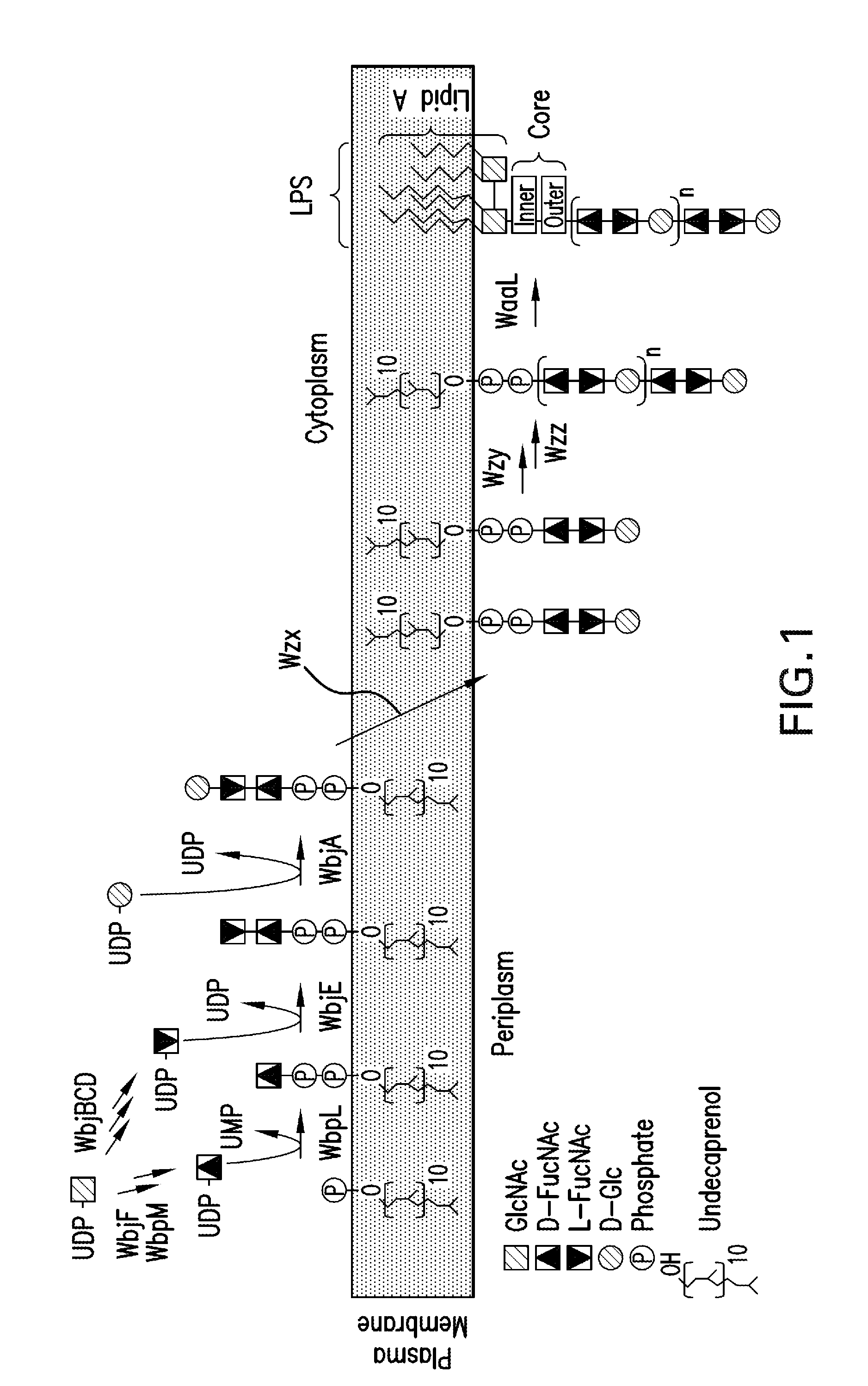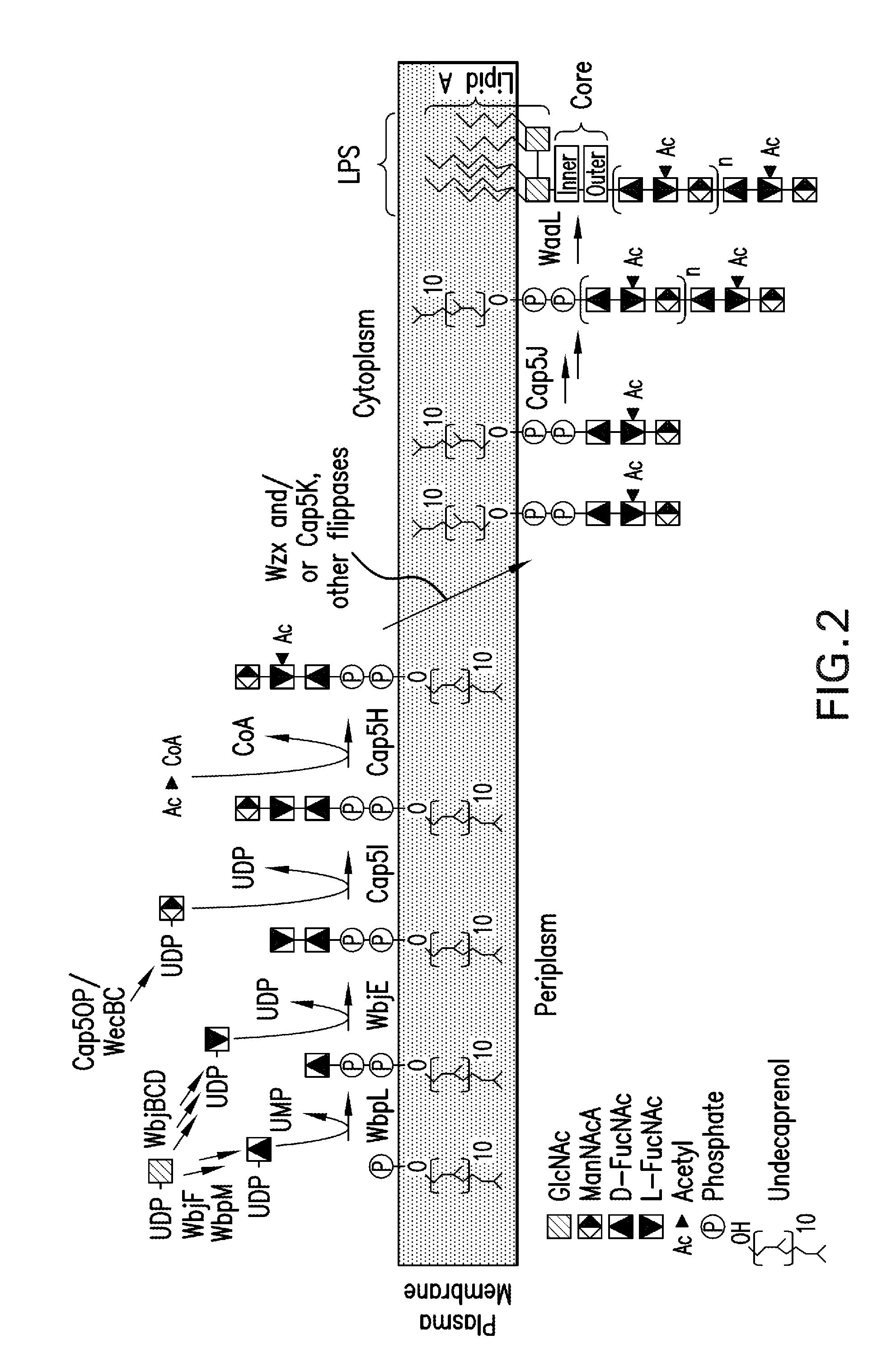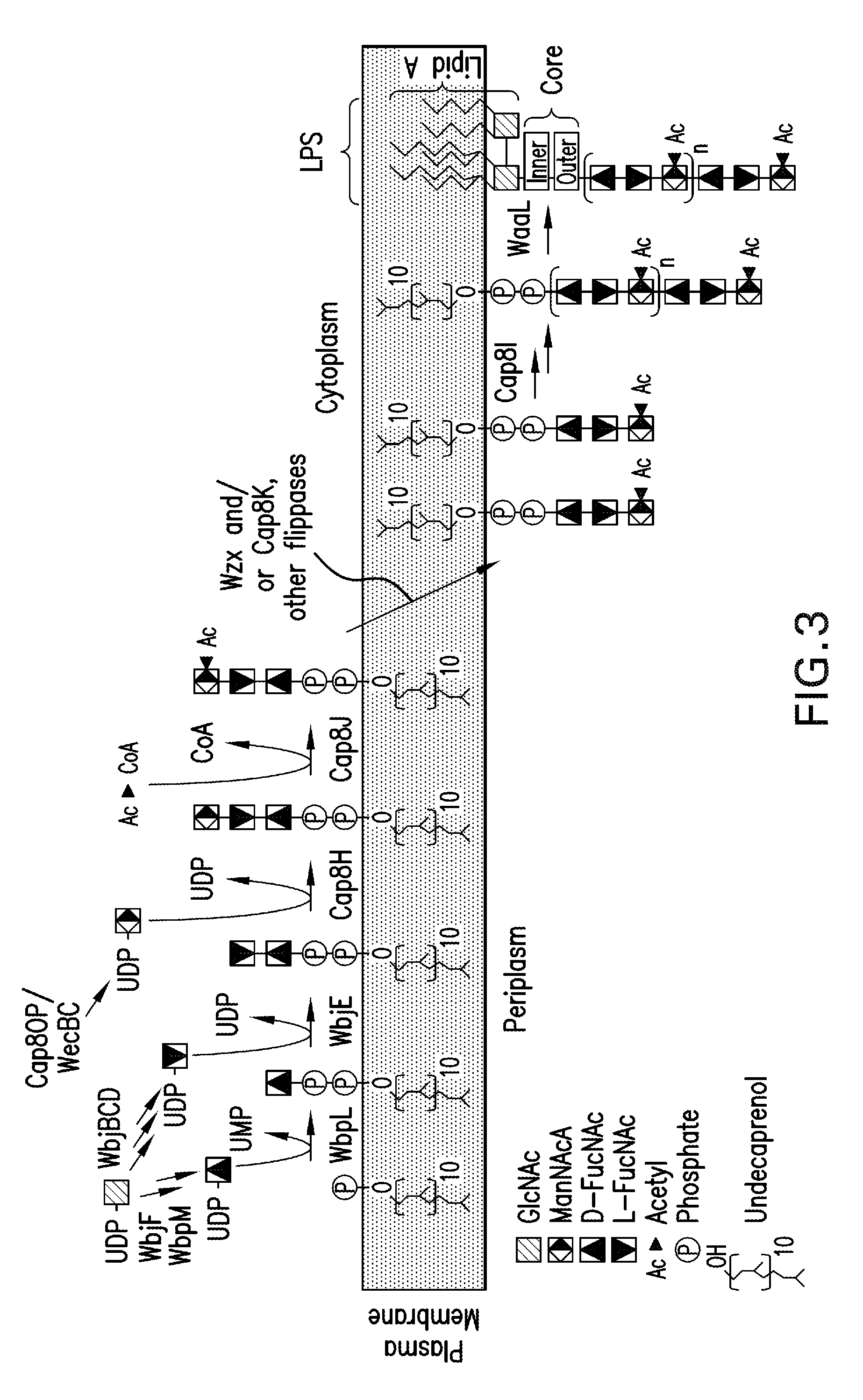Capsular gram-positive bacteria bioconjugate vaccines
a technology of gram-positive bacteria and vaccines, applied in the field of vaccines, can solve the problems of infection, decreased nasopharyngeal colonization, no single toxin that can be used to develop vaccines, etc., and so on. the need for additional control strategies, such as vaccines, is sorely needed
- Summary
- Abstract
- Description
- Claims
- Application Information
AI Technical Summary
Benefits of technology
Problems solved by technology
Method used
Image
Examples
example 1
Synthesis of CP5 and CP8 Polysaccharide in E. coli Cells
[0286]A goal of an embodiment of the invention is to produce the CP5 and CP8 antigenic polysaccharides in E. coli. As discussed above, we exploited in an novel way, surprising in view of the prior art, the fact that the CP and O-antigen production pathways functionally overlap, a fact which is represented in the structure of the RU (See FIGS. 1-4). The capsular glycans of CP5 and CP8 are polymers consisting of similar trisaccharide RUs of 2-Acetamido-2-deoxy-D-mannuronic acid (D-ManNAcA) and two 2-Acetamido-2,6-dideoxy galactose residues with D- and L-configurations (D- and L-FucNAc). The ManNAcA residues are linked differently in the two serotypes; additionally, the linkage between RUs in the polymerized glycan is different. In addition, there is an immunodominant O-acetyl modification at different positions in the two antigens (Jones, C. 2005. Revised structures for the capsular polysaccharides from Staphylococcus aureus type...
example 2
Synthesis of CP5 and CP8 Polymer on Lipid in E. coli Cells
[0294]As high expression of the cap5 specific genes lead to lower polymer formation, an alternative expression system for the recombinant glycans was constructed to address this problem. In detail, in a novel approach unexpected in light of the prior art, the P. aeruginosa glucosyltransferase (wbjA) and the polymerase (wzy) of O11 were replaced by the genes encoding the CP5 / 8-specific elements from the capsular gene cluster of S. aureus Mu50 / MW2 (cap5 / 8HIJK and parts thereof) producing a single, chimeric gene cluster composed of P. aeruginosa O11 and S. aureus CP5 or CP8 genes (FIG. 6). The construct contained the specific genes of S. aureus. Each was tagged for expression detection and each contained an introduced ribosomal binding site, and was followed by a chloramphenicol resistance cassette (cat) for selection of recombined clones resulting in SEQ ID NO: 2, SEQ ID NO: 3, and SEQ ID NO: 4, according to the method of Datse...
example 3
Molecular Structure Confirmation of the Recombinant Glycans
[0305]To confirm the activity of the chimeric CP5 / O11 cluster in E. coli on a molecular level, a novel method allowing the analysis of UndPP linked sugars by using fluorescent labeling of the sugar at reducing end with 2-Aminobenzamide (2-AB) was developed. To enhance the analysis resolution, chimeric clusters were used containing deletions that increased the amount of unpolymerized RUs. Glycolipids from different E. coli cells expressing the chimeric cluster contained in the pLAFR1 plasmid and lacking the cap5K flippase (SEQ ID NO: 2) were analyzed as described below.
[0306]To extract UndPP-linked glycans, E. coli cells were washed with 0.9% NaCl and lyophilized. The dried cells were extracted once with 30 ml organic solvent (85 to 95% Methanol=M). The lyophilized cell pellet was further extracted twice with 5 ml Chloroform:Methanol:Water (C:M:W=10:10:3; v / v / v). The (M) extract was converted with chloroform and water to a fi...
PUM
| Property | Measurement | Unit |
|---|---|---|
| Electrical conductance | aaaaa | aaaaa |
| Electrical resistance | aaaaa | aaaaa |
| Strain point | aaaaa | aaaaa |
Abstract
Description
Claims
Application Information
 Login to View More
Login to View More - R&D
- Intellectual Property
- Life Sciences
- Materials
- Tech Scout
- Unparalleled Data Quality
- Higher Quality Content
- 60% Fewer Hallucinations
Browse by: Latest US Patents, China's latest patents, Technical Efficacy Thesaurus, Application Domain, Technology Topic, Popular Technical Reports.
© 2025 PatSnap. All rights reserved.Legal|Privacy policy|Modern Slavery Act Transparency Statement|Sitemap|About US| Contact US: help@patsnap.com



